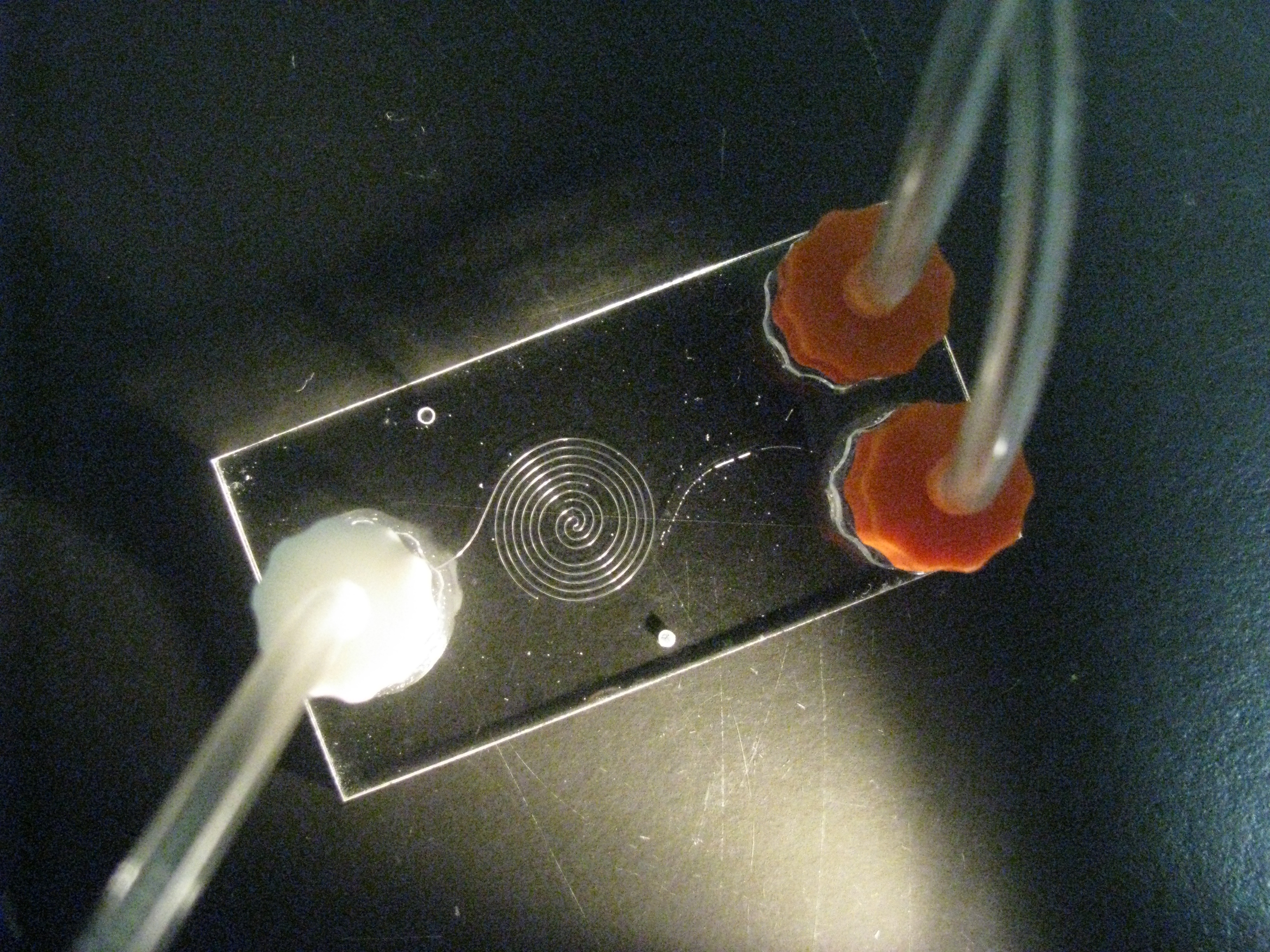
The sorting and separation of biological cells and small particles is an area of great interest to numerous microfluidic research groups. While various approaches have been demonstrated, developers have been paying particular attention to designs that rely purely on the flow properties inside the microchannels to carry and progressively separate, or concentrate, the particles of interest.
For a long time it has been known that fluidic shears, in straight channels, generate lateral forces, which cause inertial migration of particles away from the center [1,2]. Various forces come into play and concentrate the particles into preferential zones. More recently, it was recognized that in curvilinear channels, additional forces break the symmetry associated with straight channels [3,4]. These various forces work together to trap particles in a force well, located near the inner wall. This separation approach works particularly well with particles 5 microns and larger (For smaller particles, Brownian motion and diffusion act as dispersive effects that lessen the effectiveness of the process).
Our microfluidic chips can operate at relatively high pressures (especially when equipped with Nanoport fittings), which results in high flow speed and high separation efficiency. (Contact us to learn more about microfluidic devices optimized for particle separation).

References:
-
Ho B. P. and Leal L. G., “Migration of rigid spheres in a two-dimensional unidirectional shear flow of a second-order fluid”, J . Fluid Mech., 76, pp. 783-799, (1976).
-
Liu D., Maxey M., and Karniadakis. G. E., “A Fast Method for Particulate Microflows”, J. of Micromechanical Systems, 11, 691, (2002).
-
Howell P. B. , Mott D. R., Goldena J. P. and Ligler F. S., “Design and evaluation of a Dean vortex-based micromixer”, LabChip, 4, 663-669, (2004).
-
Seo J., M. H. Lean and A. Kole, “Membrane-free microfiltration by asymmetric inertial migration”, Appl. Phys. Lett., 91, 033901, (2007).
